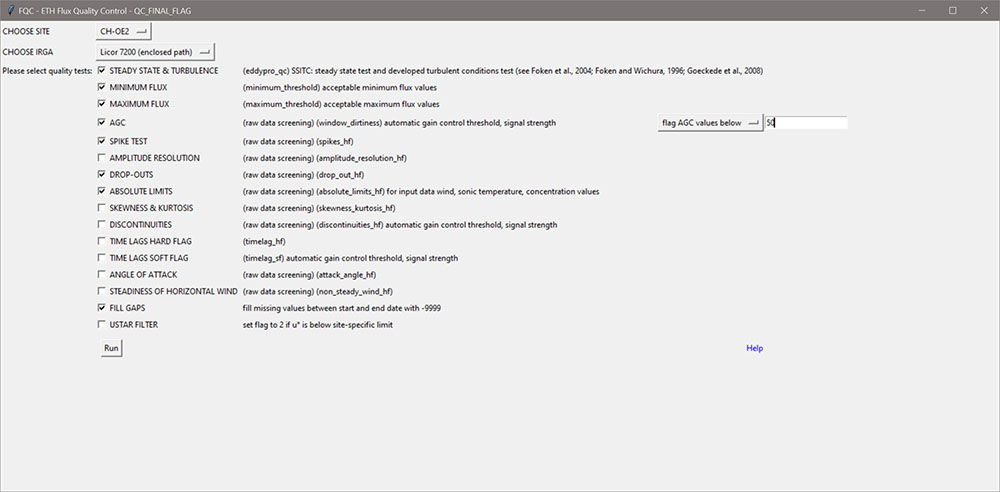CH-DAV / FF-202005
Flux calculations for years 2019 (new) and 2020 so far (new).
- Fluxes 2020 include data so far, until incl. 23 April 2020.
Contents
Level-1 Fluxes
- Python script for conversion to CSV and flux calculations: FCT v0.94
- EddyPro version: 7.0.6 (18 Dec 2019)
- For an overview of raw data formats see here.
Calibration Gas Issue
Data for CH-DAV 2019-2020 are not affected by this issue. See here for more details on this issue.
Workflow
- Conversion of raw data binary files to CSV.
- 2019: Calculation of fluxes for the complete year. The setup during the time periods 2019_1-2-3 is the same, but there seem to be 2 files that are erroneous, hence the different time periods to be aware of these error files. See notes from here: (16) The file
2019082913.X00seems to be erroneous and must be skipped. (17) The file2019102513.X00seems to be erroneous and must be skipped. - 2020: Calculation of all fluxes up until incl. 16 May 2020, but since screened meteo data was available until incl. 23 April 2020 data for Level-2 was only considered until then (i.e. no Level-2 for 24 April to 16 May 2020).
Open Lag Runs
The lag time between SA and IRGA was checked for 2018 and 2019 in relatively large time windows. This was done by searching the max covariance without using a default lag time in EddyPro, i.e. all found lag times in the EddyPro full_output file show found lag times. The peak of the distribution of all found lag times in 2019 and 2020 were: peak @1.25s for CO2, peak @1.30s for H2O, time window for lag search 0-10s.
Spectral Correction
The spectral correction worked without any errors in 2019. For the correction of the so far available fluxes 2020 the spectral assessment file from the 2019 run was used (without errors, worked).
Off-season Carbon Uptake Correction (Burba Correction)
Not necessary since the LI-7200 was used.
Meteo parameters for flux calculations
Used columns for meteo_aux data:
Instead of the NABEL variables, I wanted to use the ETH ICOS variables (ICOS conform), but unfortunately there were quite some gaps in some of them. Therefore, I gave preference to the NABEL variables and filled gaps with ICOS variables to get a more complete and coherent time series.
- Ta_1_1_1 from NABEL: filled gaps in TA_NABEL_AVG_T1_35_1 with TA_PROF_AVG_T1_35_1
- Pa_1_1_1 from ETH: PA_AVG_H1_0_3 (6% gaps in 2019)
- RH_1_1_1 from NABEL: filled gaps in RH_NABEL_AVG_T1_35_1 with RH_PROF_AVG_T1_35_1
- Rg_1_1_1 from ETH: SW_IN_CORRECTED_AVG_T1_35_2
- Lwin_1_1_1 from ETH: LW_IN_AVG_T1_35_2
- PPFD_1_1_1 from ETH: PPFD_IN_CORRECTED_AVG_T1_35_2
Level-2 Fluxes
- Quality control with Python script FQC v2.1.0.
- For 2020, only fluxes for which screened meteo data was available for flux calculations were considered (until incl. 23 April 2020).
- QC settings are shown here:

Last Updated on 18 Feb 2024 22:00
